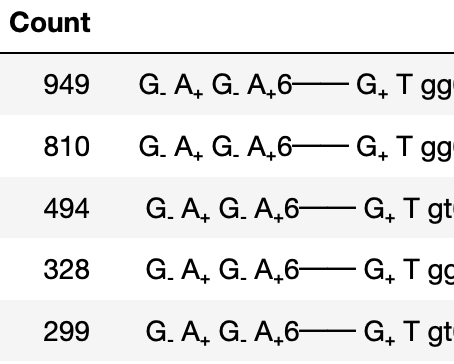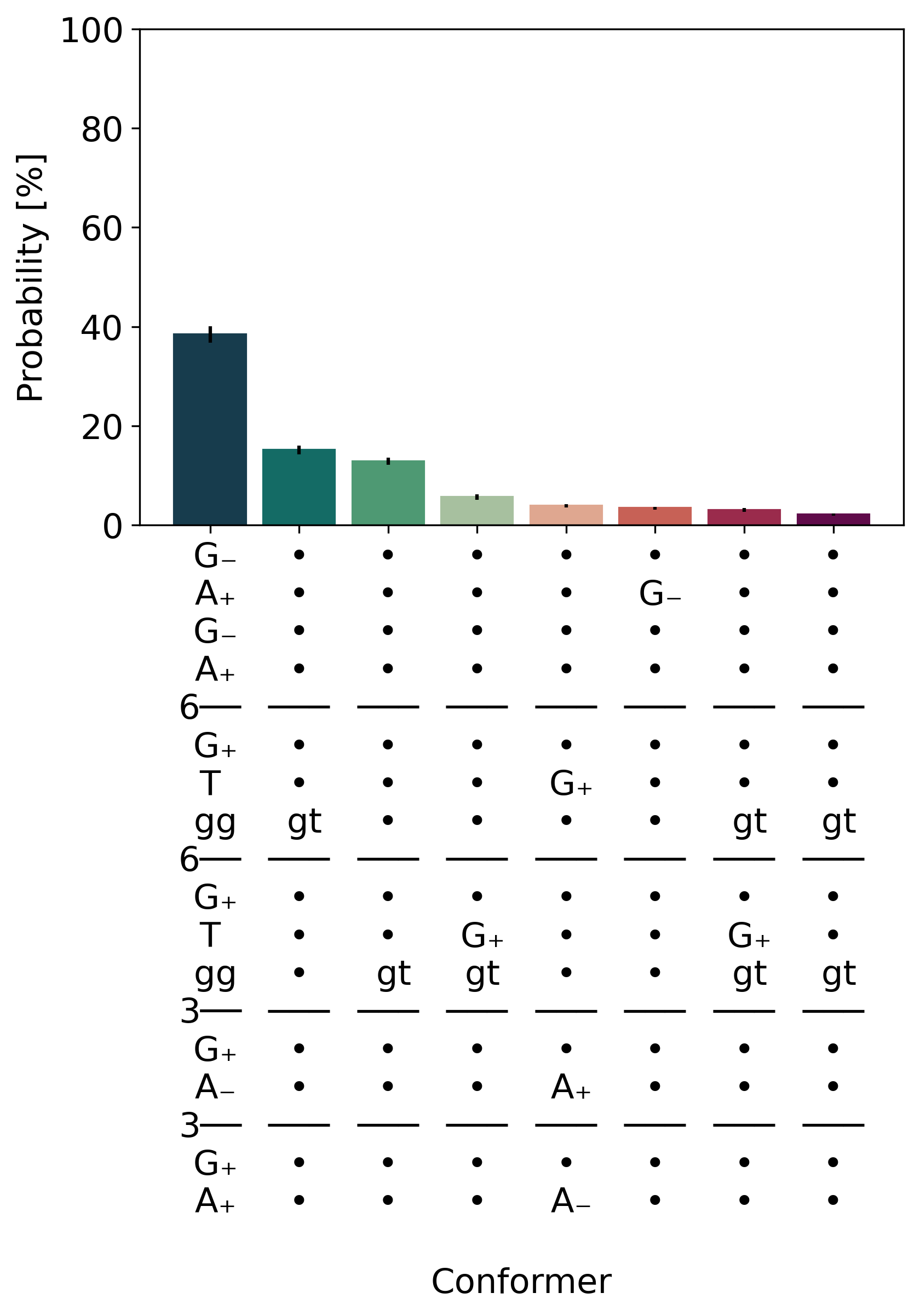GlyCONFORMERS is a Python package that assigns conformer strings to N-glycan conformers, based on their torsion angle values.
Project description
GlyCONFORMER
GlyCONFORMERS is a Python package that assigns labels to glycan conformers, based on their torsion angle values, in order to differentiate various 3D-structures of one single glycan. It enables the automated assignment of the GlyCONFORMER string that was introduced in:
Grothaus et al. 2022, Exploration, Representation, and Rationalization of the Conformational Phase Space of N-Glycans, J. Chem. Inf. Model. 2022, 62, 20, 4992–5008 https://pubs.acs.org/doi/full/10.1021/acs.jcim.2c01049 for N-glycans.
Check the paper or tutorial for a detailed explanation of the GlyCONFORMER string generation. The workflow is not exclusivly designed for N-glycans, but can also be applyied to any other glycan type there is.
Installation
To use GlyCONFORMER, first install it using pip:
$ pip install GlyCONFORMER
Tutorial
The tutorial juypter notebook should be run from within the GlyCONFORMER package folder or you have to change the path directing to the TUTORIAL folder.
The tutorial includes different N-glycan types and different complexity levels of how to obtain a GlyCONFORMER label string for custom glycan types and their recorded torsion angle values. The minimum example is given by the high-mannose type N-glycan M5, where only the file M5_angles.dat with torsion angle values is used as input:
It is used by the glyconformer package, whereas remaining necessary information are read from the LIBRARY_GLYCANS folder by specifying the glycantype = "M5":
conformer = glyconformer(inputfile = "TUTORIAL/M5_example/M5_angles.dat", glycantype = "M5")
When executing the run command:
binary, population = conformer.run()
a binary dataframe is produced, where the torsion angles have been converted to letters corresponding to their values and associate them to a certain minima of the free energy profile along that torsion angle.
Additionally, the occurance of each conformer string is counted and outputted to the population dataframe:
The obtained information can also be used to plot a histogram, displaying the conformer distribution by:
conformer.plot()
Conformer labels are given on the x-axis and deviations from the most populated conformer indicated by explicit letters, where dots are used when no change in that torsion angle could be detected.
For more elaborate examples and a detailed explanation of how free energy profiles of each torsion angle are classified, check out the Tutorial_GlyCONFORMER.ipynb notebook.
Documentation
See documentation https://glyconformer.readthedocs.io/en/latest/index.html
Project details
Release history Release notifications | RSS feed
Download files
Download the file for your platform. If you're not sure which to choose, learn more about installing packages.
Source Distribution
Built Distribution
Hashes for GlyCONFORMER-1.0.0-py3-none-any.whl
| Algorithm | Hash digest | |
|---|---|---|
| SHA256 | 96d7f887c90abf7fd5963e7095effb1047d6879e9f9485398d88b3f945239181 |
|
| MD5 | dcd22196830cbd7ba259fc31725733a4 |
|
| BLAKE2b-256 | 5e1588dfe7d5f27f500796948b6aad57e1e8385d3250776c5fb74615e936bf01 |
















